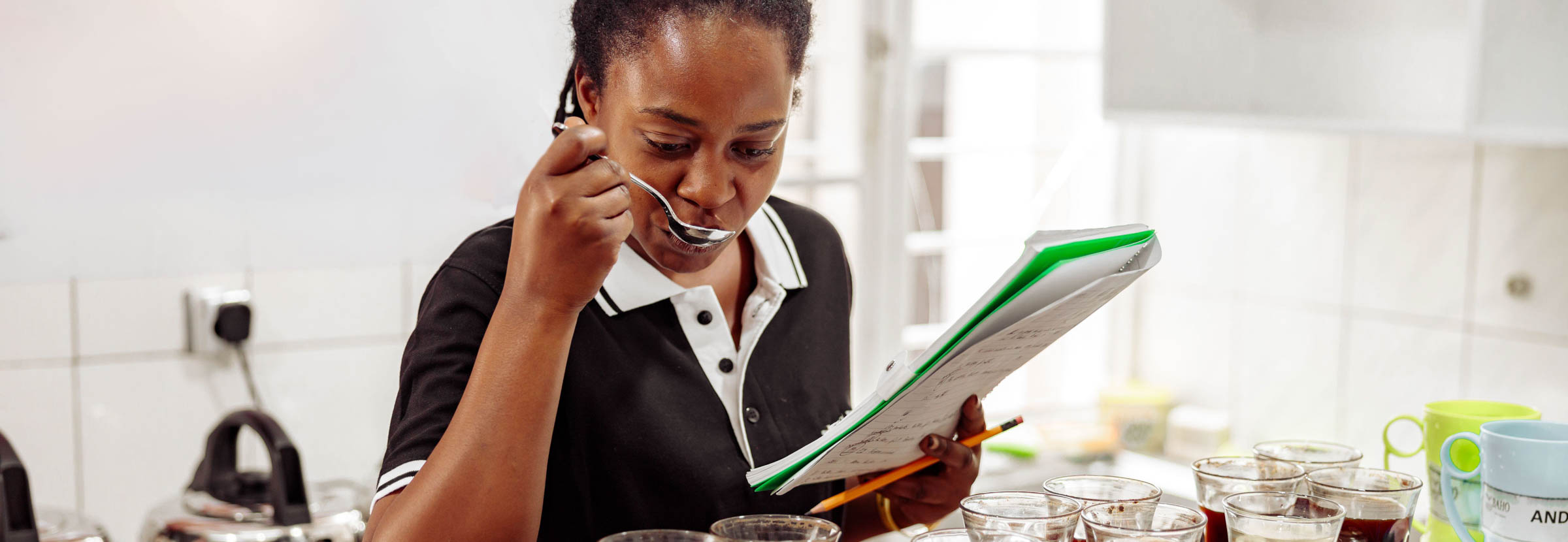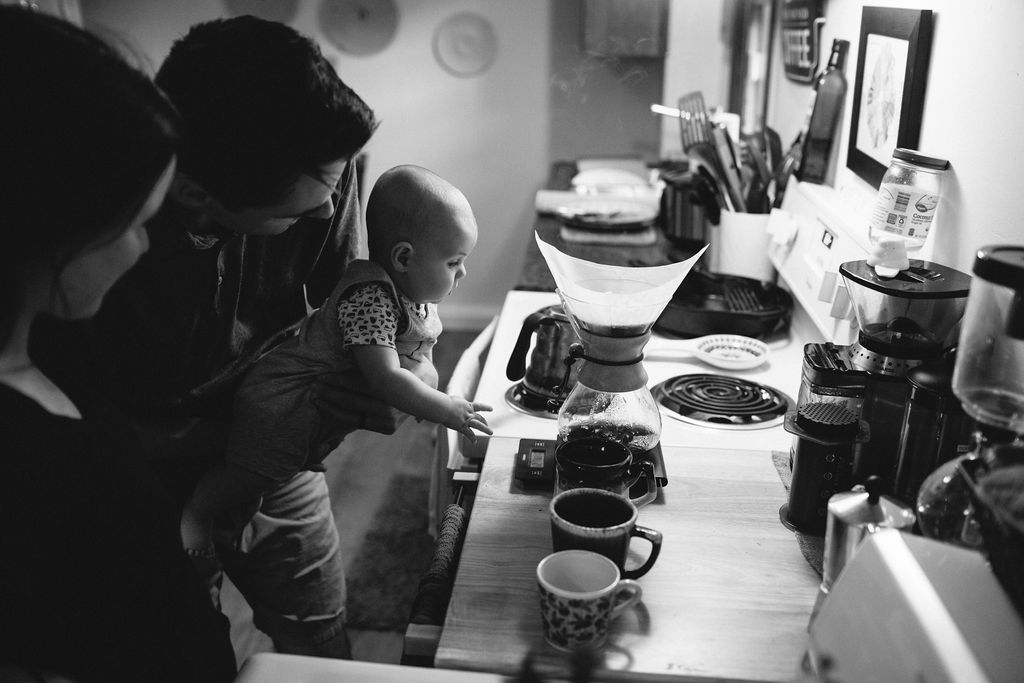Is there a universal way to approach roast profiling?
Any roaster will tell you that every coffee is different. Whether it’s different origins (or even regions), varieties, processing methods, or bean densities, there are many factors which influence how you roast coffee.
It’s ultimately a roaster’s responsibility to bring out the best characteristics of each coffee – and potentially highlight more of its nuanced qualities. So bearing in mind that no two coffees are exactly the same, roasters will need to develop different roast profiles for each one to get the best results.
But is there a universal approach to roast profiling that coffee professionals can follow – and then tweak accordingly for every coffee? Or is it best to take a different approach every time?
I spoke to Marcus Young, Executive Vice President of Coffee at goodboybob, and Fabio Ferreira, co-founder of Notes Coffee, to find out more.
You may also like our guide to roasting specialty coffee for espresso.

What is roast profiling?
In the coffee industry, we often talk about light, medium, and dark roast profiles – but what do they really mean?
Sweet Maria’s defines a roast profile as “what happened during the roast and what adjustments were made to affect the outcome”. Essentially, it’s a set of data collected during the roasting process, namely time and temperature. These data points are then displayed on a graph (or roast curve) so they can be replicated – similar to a recipe used for cooking or baking.
We can then define roast profiling as the process of manipulating variables like time and temperature to get a good balance of acidity, sweetness, bitterness, and texture for a specific coffee.
Marcus is the Executive Vice President of Coffee at goodboybob, a Golden Bean-winning specialty coffee roaster in California, US. He says that a big part of learning how to develop roast profiles is tasting many different coffees.
“In order to be a great roaster, you’ve first got to be a great cupper,” he tells me.
Cupping is an industry practice carried out by producers, green coffee buyers, and roasters around the world to taste coffee. It follows a standard set of brewing protocols, which Q graders use to assess and score sensory profiles and quality.
Regularly tasting a variety of coffees – including different origins, altitudes, processing methods, and varieties – means roasters are better able to understand the vast range of flavours in coffee. In turn, the process of developing and customising roast profiles becomes easier.
Why is it so important?
As we’ve established, every coffee is different. For example, a coffee grown in a humid climate at a lower elevation will react differently when roasted compared to another coffee grown at a higher elevation in drier environmental conditions.
But climate and altitude are just two factors among many that affect roast profiling. Take origin for instance. With most Kenyan coffees having much brighter and more prominent acidity than coffees grown in other countries, this needs to be accounted for when developing a roast profile.
Similarly, you also need to roast washed coffees differently to natural, honey, and experimentally processed coffees.
Considering this, there’s no one-size-fits-all approach to roast profiling. But what roasters can do is follow general steps and guidance to find the optimal roast profile for a particular coffee.

Where do you start with roast profiling?
For more experienced roasters, it’s often easier to develop an initial roast profile for a coffee they have never sourced before.
Fabio co-founded UK roaster Notes Coffee in 2008 with business partner Robert Robinson. He says that when he buys a new coffee, he looks through previous roast profiles to find an initial one that may work best.
“I use that roast profile as my baseline so that I don’t roast the new coffee ‘blind’,” Fabio tells me.
This obviously helps to increase the chances of developing a good roast profile the first time around – and then tweaking accordingly to get the best results.
Newer roasters, however, are unlikely to have as big of a roast profile catalogue than more established ones. In turn, they need to consider various attributes of the coffee, and build a roast profile from there.
To assist with the process, both Fabio and Marcus recommend buying a coffee from a previous harvest from your green coffee supplier. Less experienced roasters can then use this cheaper coffee to play around with roast profiling, and better understand how different variables impact overall sensory profile.
Which factors are the most important to consider?
There are, of course, many crucial variables to factor in when developing a roast profile. But arguably, bean density and processing methods are two of the most important.
“Bean density is an essential factor for me to understand how ‘hard’ I can ‘hit’ a particular coffee,” Marcus says. For example, you may need to roast a denser coffee at a higher temperature, whereas less dense coffee usually requires a lower drop temperature and a more gentle approach.
“Similarly, processing method can also tell me how much heat I should apply,” Marcus adds. “For a washed coffee, I would roast it for a little longer, while for a natural coffee, I would reduce total roast time to showcase more of its flavours.”
Beyond bean density and processing method, other variables are also key to remember:
- Variety (which impacts bean size – another important factor)
- Origin
- Moisture content (which should be between 8% and 12.5% for green coffee)

Understanding what causes roast profiles to change
Although green coffee is a stable product, it will eventually start to age over time – usually around a year after harvest. With this in mind, roasters need to be aware of how green coffee will change in the months ahead.
As green coffee ages, it will start to lose its acidity and sweetness. This means that to avoid any flat, stale, or papery flavours, roasters need to create roast profiles accordingly.
“With older green coffee, I usually roast a little bit longer, which gives you more time to develop the sugars and flavour compounds,” Marcus says. “For instance, if it was a ten-minute roast when the coffee was fresh, then I would increase the total roast time to 10.5 or 11 minutes.”
Both green and roasted coffee must be stored in optimal conditions to preserve freshness and quality for as long as possible. Variables like temperature, humidity levels, and exposure to light and oxygen play a big role in this.
Looking specifically at temperature, significant fluctuations will cause green coffee to age much more quickly, which then affects how the coffee will be roasted.
“Even the weather will influence your roast profiling,” Fabio says. He describes a time when he developed a roast profile for a specific coffee which should have produced good results, but his curve was “completely off the charts”.
“It was too cold that day,” he adds, emphasising that roasters should account for weather conditions on batch production days and how they might impact the roasting process.
Keeping variables consistent
There are certainly many other factors that can influence a roast profile, however, some of them are more related to technique rather than how the coffee is changing over time.
Batch size is important, for example. If you roast with a different amount of coffee every time, you will inevitably receive different results with every batch. This is because batch size affects air flow in the roaster, which then impacts heat distribution in the machine.
Similarly, if you roast the same coffee on two different machines, the results are likely to be noticeably different.
As a general rule of thumb, keep variables like batch size and type of machine as consistent as possible. It’s then much easier to identify other key variables which need to be changed to achieve the best possible roast profile.

Tips & advice on how to approach roast profile development
It takes plenty of practice to create a roast profile that’s just right for a particular coffee. However, the process shouldn’t be intimidating. Ultimately, you always need to consider how the coffee should taste – and develop a profile which best highlights these characteristics.
“The reality is that there’s a lot of different ways to roast really good coffees, and people should be open minded to happy surprises,” Marcus says.
Fabio, meanwhile, recommends that roasters shouldn’t become too fixated on “the aesthetic of the roast curve”.
“Sometimes it’s too easy to not look at the numbers and how the roast curve developed, or factor in which coffee you’re using,” he says. “You may have a beautiful roast curve, but the coffee might not taste great.”
Tasting different coffees
As previously mentioned, one of the most effective ways to improve roasting skills is to try as many different coffees as possible.
“For anyone that starts roasting, learn how to cup coffee,” Fabio explains. “It’s easy to train new roasters how to manage machines and follow profiles, but you need to know how to taste coffee.
“And sometimes that’s the most difficult part of the job,” he adds. “A good roaster needs to know how to hone the acidity and sweetness of coffee – it all comes down to tasting.”

So is there a universal way to approach roast profiling? Well, yes and no. With each coffee being unique – and changing over time – roasters need to account for these differences to get the best results.
One thing roasters can always do to improve the consistency of their roast profiles, however, is to taste many different coffees on a regular basis. This way, they can better understand the range of flavours in coffee – and how to highlight them as much as possible.
Enjoyed this? Then read our article on how to define your roast profile.
Photo credits: Amit Dave, Daniel Mendoza, Elina Feofantova
Perfect Daily Grind
Want to read more articles like this? Sign up for our newsletter!





